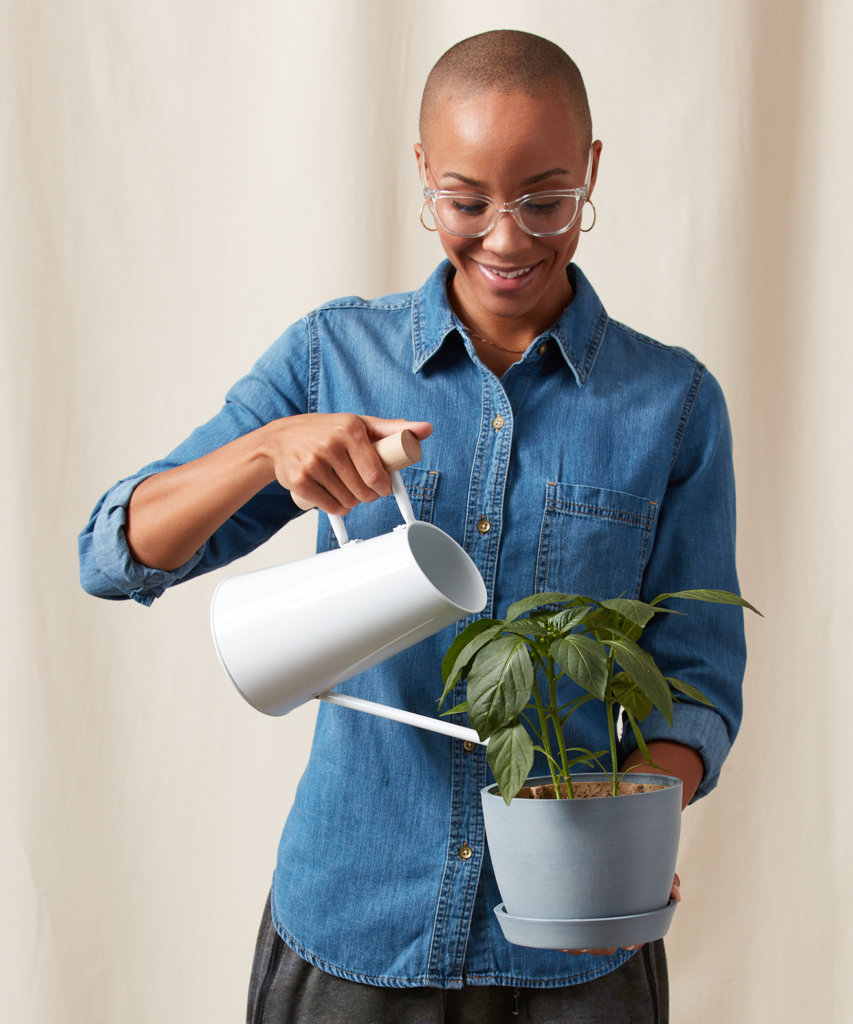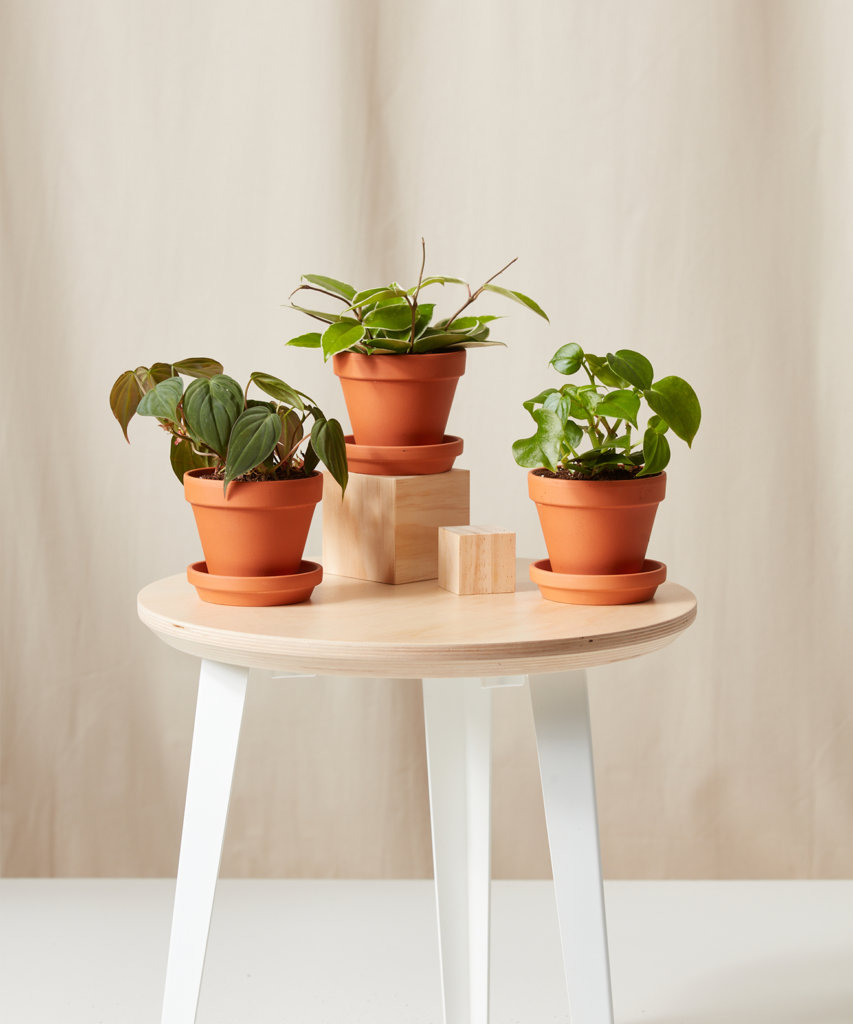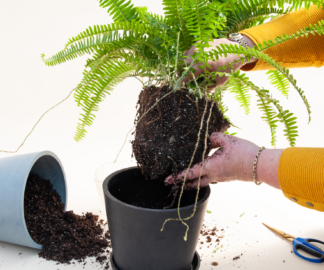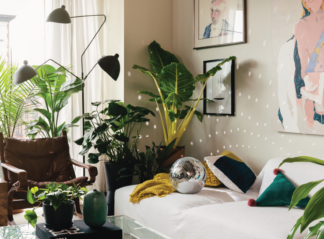Plant Care
Houseplant Care: What’s wrong with my Fiddle Leaf Fig?
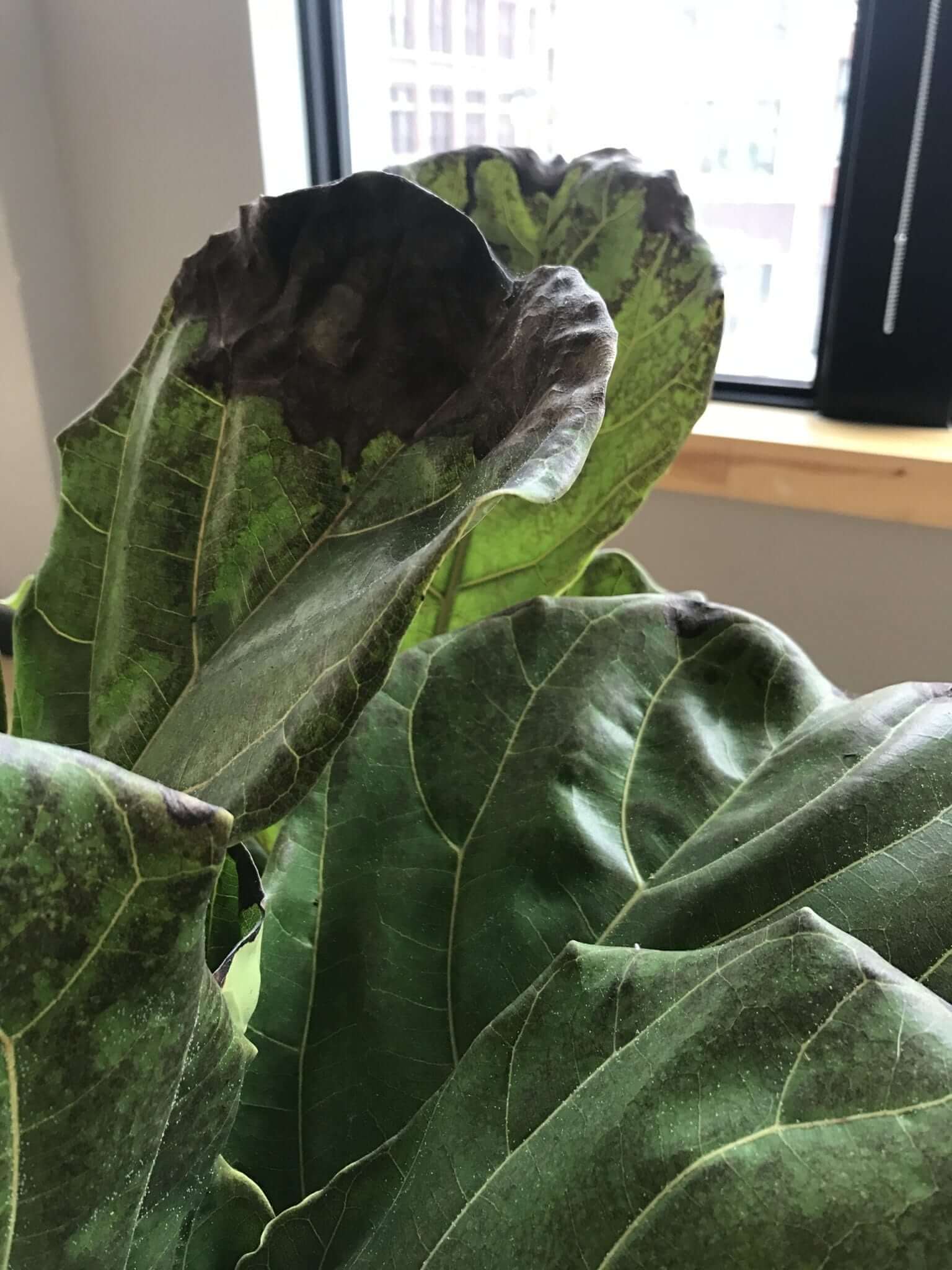
There are several common issues that we see with Fiddle Leaf Figs, and luckily, most of them are relatively easy to fix. However, it can take time for your Fiddle Leaf Fig to recover, so have patience and know that the Grow-How™ Team is here to help!
Below are some of the most common Fiddle Leaf Fig symptoms, their potential causes, and how you can fix the problem.
Plant Symptom: Dropping leaves like crazy
Potential Cause: Improper Watering and/or Improper Temperature
Leaf drop is generally caused by getting too much or too little water. But exposure to temperature extremes—either hot or cold—can also cause Fiddle Leaf Figs to drop their leaves.
How to fix it:
First, check its location to see if too close to an A/C vent, heater, or draft and move it if necessary. Remember, that Fiddle Leaf Figs are native to warm, humid, tropical places where they get consistent moisture and even temperatures. Therefore, your tree will be happiest when kept in similar conditions. Keep the soil moist but not soggy. Water only when 50-75% of the soil volume is dry. You can also mist your Fiddle Leaf Fig regularly to boost its humidity.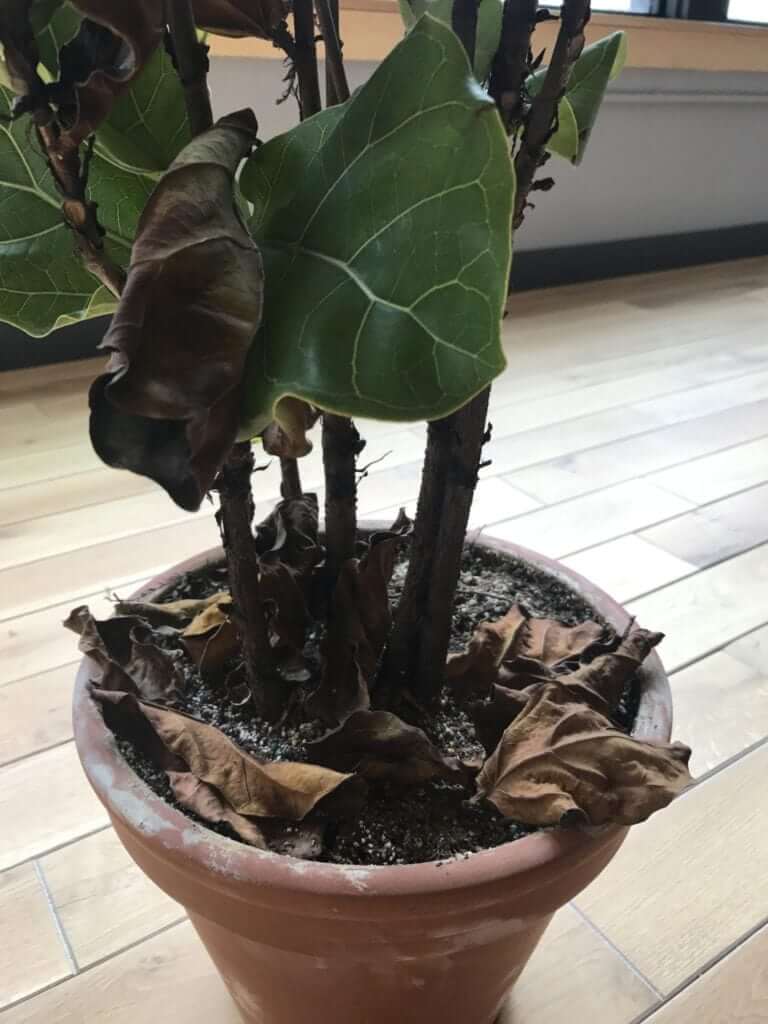
Plant Symptom: Brown spots on leaves
Potential Cause 1: Root Rot
Brown spots due to fungal infection from the roots sitting in too much moisture. Overwatering and poor drainage cause root rot, which spread to the leaves of your plant.
How To Fix It:
The only way to be certain that your plant has root rot is to remove the pot and inspect the roots. If the roots are brown and mushy, root rot is the culprit. If there are just a few brown spots on the leaves, let your plant dry out for two weeks or so until the roots have adequate time to recover.
Remove the affected leaves and make sure your plant has adequate light. If there are multiple brown spots, you’ll need to cut away any brown, mushy roots and the leaves with brown spots then repot your plant, taking care not to over water in the future.
Potential Cause 2: Bacterial Infection
The telltale sign of bacterial leaf spot in your Fiddle Leaf Fig is yellowing of the leaves in addition to the brown spots. With root rot, the leaves will typically remain dark green with brown spots, but with bacterial leaf spot, the leaf will turn yellow as the brown spot spreads. Both root rot and bacterial leaf spot will cause the leaves of your Fiddle Leaf Fig to eventually fall off. Bacterial leaf spot prefers feeding on new growth, so if your newer leaves are worse off than your older leaves, bacterial leaf spot is likely to blame.
How To Fix It:
Unfortunately, this is the hardest condition to treat in a Fiddle Leaf Fig. Even with proper care and watering, it may be too late for your plant. If the damage is not severe, cut off all of the leaves with brown spots and repot your plant with fresh, sterile soil. Give it plenty of light and go easy on watering until it recovers.

Potential Cause 3: Insect Damage
Insect infections are rare, but leave obvious clues. Use a magnifying glass to look for webs or insects on your plant. The giveaway to diagnose insect damage is small spots on the leaves that turn into holes.
How To Fix It:
Insect infestations are easy to treat. Use a neem oil product designed for houseplants. Or, the homemade remedy of putting a tablespoon or two of baking soda and a teaspoon or two of mineral oil in a spray bottle of water. Shake the solution well and then spray all areas of the plant that are infected. Keep infected plants away from your other houseplants. Take your plant outside if possible, as the neem oil has an unpleasant smell that lingers. Spray all of the leaves of your Fiddle Leaf Fig thoroughly. Be sure to turn each leaf to spray the underside and don’t forget where the leaf meets the stem. Wait two weeks, inspect again, then repeat the spraying process if needed.
Potential Cause 4: Your Plant is Too Dry
Dry plant brown spots are somewhat easier to diagnose, as they will have dry tan or brown areas that start at the edge of the leaf and cause the leaf to curl. Your plant will overall look wilted or dry at times and the soil may have receded from the pot (shrinkage). This can cause the water to run between the pot and the soil and never reach the root ball.
How To Fix It:
If your Fiddle Leaf Fig is in a very dry environment or near a heater, consider moving it to another location where the temperature is less extreme. Water regularly when the soil is 50-75% dry and monitor your plant to make sure it’s getting enough moisture.
You can try misting every one to three days or using a humidifier near your plant as well. Give your plant a good long drink, making sure the root ball is thoroughly wet—make sure water flows freely from the bottom of the pot. Let the plant rest and expel excess water before placing it back on its saucer.
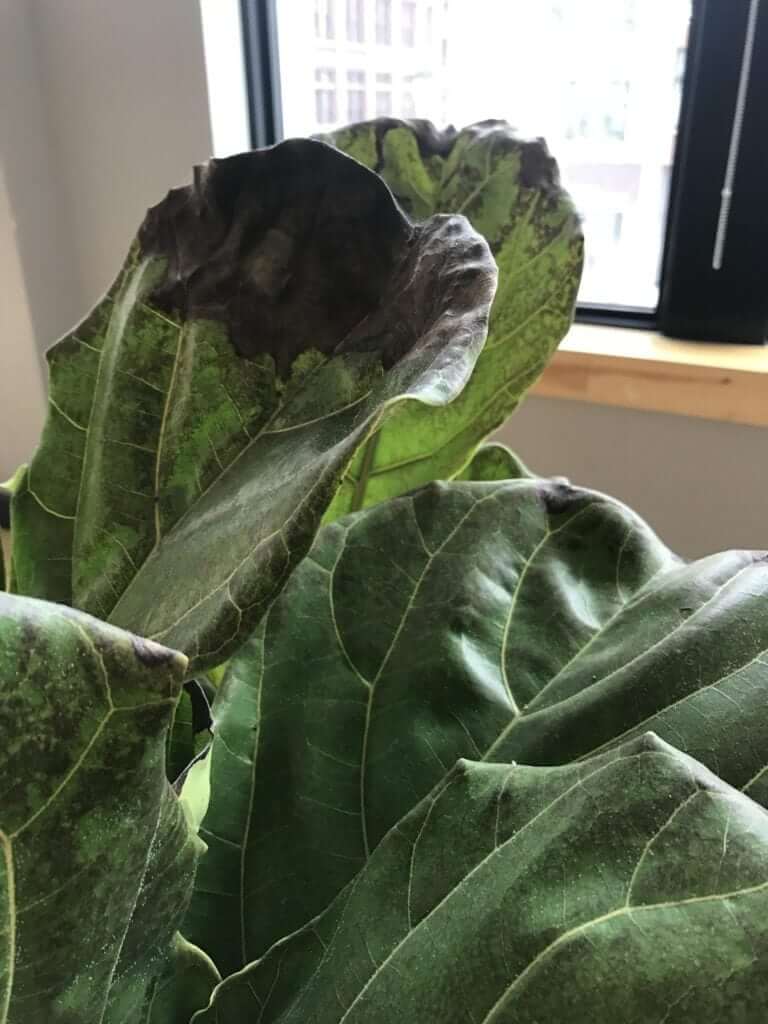
Plant Symptom: Tan, almost white spots, on the top of leaves
Potential Cause: Sunburn
If your plant gets too much direct sunlight, it can get a sunburn, which presents as light brown spots that may look bleached. The spots will be predominantly on the top leaves and sometimes can show some red/yellow coloring.
How To Fix It:
Remove the sunburned leaves with sharp scissors or a pruning shears and relocate your plant to an area that is protected from the direct rays of the sun.
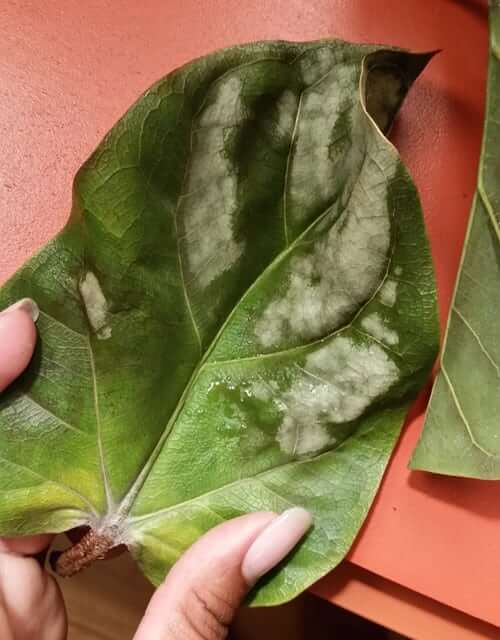
Grow-How™ Note
We suggest always removing the damaged area of a leaf or the complete leaf if entirely brown. Removal of the dead leaf or damaged areas helps the plant recover and look its best. You will need very sharp scissors or pruning shears.
Instructions for proper removal of damaged or dead leaves
1. Trim off brown leaf tips or spots with clean shears. Cut off only the damaged tips or spots leaving a tiny margin of brown so not to damage the remaining healthy foliage on the plant.
2. If the entire leaf has turned brown, remove individual leaves at their base. Pull the leaf gently; it may come off on its own. If the leaf doesn’t separate with gentle pulling, snip through the stem with clean shears.
—
Do you have a plant question or concern? Don’t worry the Grow-How™ Team is here to help! No matter what your question is or what kind of plant you have, we are here to answer your questions and give you the encouragement you need to be the best plant parent you can be. We want to share our love and knowledge of plants with you.






